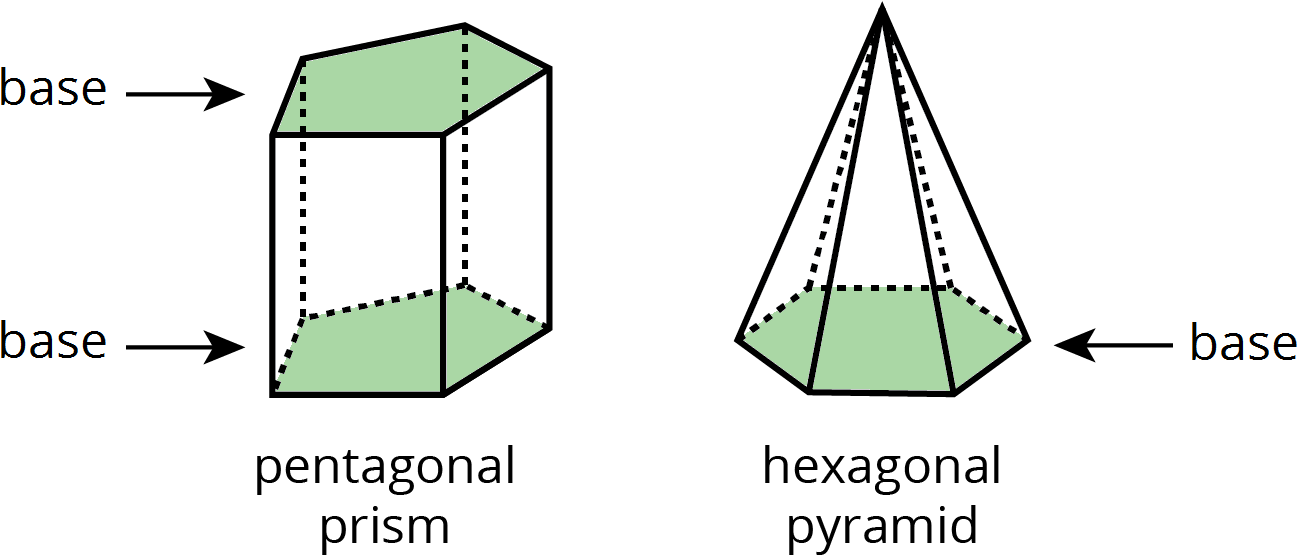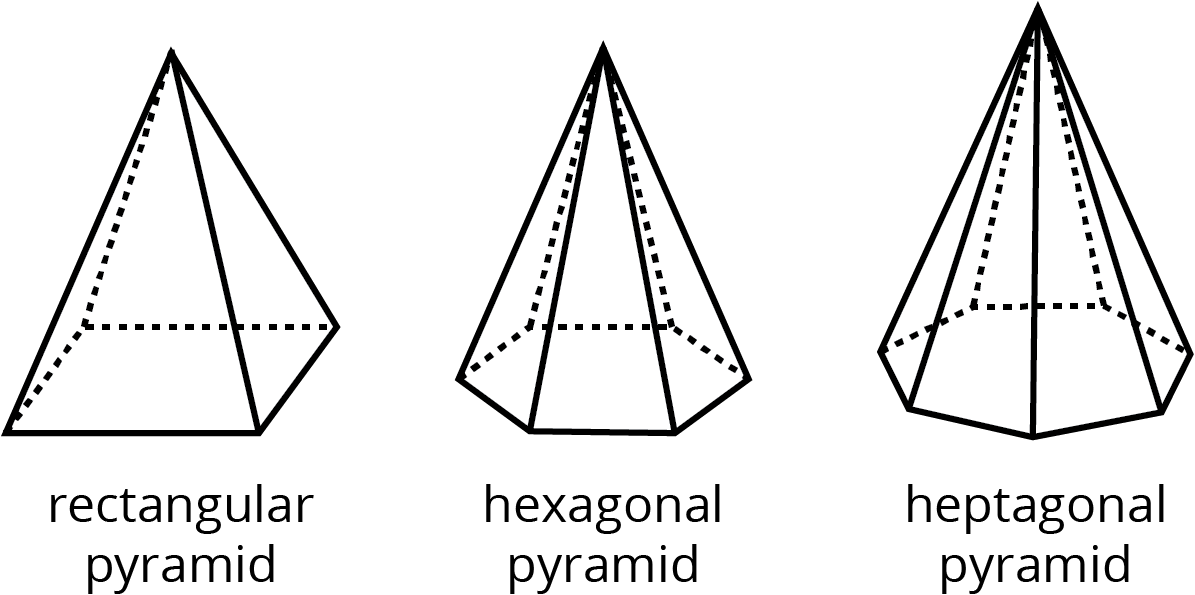Lesson 15
Decomposing Bases for Area
Let’s look at how some people use volume.
15.1: Are These Prisms?
-
Which of these solids are prisms? Explain how you know.

-
For each of the prisms, what does the base look like?
- Shade one base in the picture.
-
Draw a cross section of the prism parallel to the base.
15.2: A Box of Chocolates
A box of chocolates is a prism with a base in the shape of a heart and a height of 2 inches. Here are the measurements of the base.

To calculate the volume of the box, three different students have each drawn line segments showing how they plan on finding the area of the heart-shaped base.

- For each student’s plan, describe the shapes the student must find the area of and the operations they must use to calculate the total area.
- Although all three methods could work, one of them requires measurements that are not provided. Which one is it?
- Between you and your partner, decide which of you will use which of the remaining two methods.
- Using the quadrilaterals and triangles drawn in your selected plan, find the area of the base.
- Trade with a partner and check each other’s work. If you disagree, work to reach an agreement.
-
Return their work. Calculate the volume of the box of chocolates.
The box has 30 pieces of chocolate in it, each with a volume of 1 in3. If all the chocolates melt into a solid layer across the bottom of the box, what will be the height of the layer?
15.3: Another Prism
A house-shaped prism is created by attaching a triangular prism on top of a rectangular prism.

-
Draw the base of this prism and label its dimensions.
-
What is the area of the base? Explain or show your reasoning.
- What is the volume of the prism?
Summary
To find the area of any polygon, you can decompose it into rectangles and triangles. There are always many ways to decompose a polygon.

Sometimes it is easier to enclose a polygon in a rectangle and subtract the area of the extra pieces.
To find the volume of a prism with a polygon for a base, you find the area of the base, \(B\), and multiply by the height, \(h\).

\(\displaystyle V = Bh\)
Glossary Entries
- base (of a prism or pyramid)
The word base can also refer to a face of a polyhedron.
A prism has two identical bases that are parallel. A pyramid has one base.
A prism or pyramid is named for the shape of its base.

- cone
A cone is a three-dimensional figure like a pyramid, but the base is a circle.
- cross section
A cross section is the new face you see when you slice through a three-dimensional figure.
For example, if you slice a rectangular pyramid parallel to the base, you get a smaller rectangle as the cross section.
- cylinder
A cylinder is a three-dimensional figure like a prism, but with bases that are circles.
- prism
A prism is a type of polyhedron that has two bases that are identical copies of each other. The bases are connected by rectangles or parallelograms.
Here are some drawings of prisms.

- pyramid
A pyramid is a type of polyhedron that has one base. All the other faces are triangles, and they all meet at a single vertex.
Here are some drawings of pyramids.

- sphere
A sphere is a three-dimensional figure in which all cross-sections in every direction are circles.
- volume
Volume is the number of cubic units that fill a three-dimensional region, without any gaps or overlaps.
For example, the volume of this rectangular prism is 60 units3, because it is composed of 3 layers that are each 20 units3.
